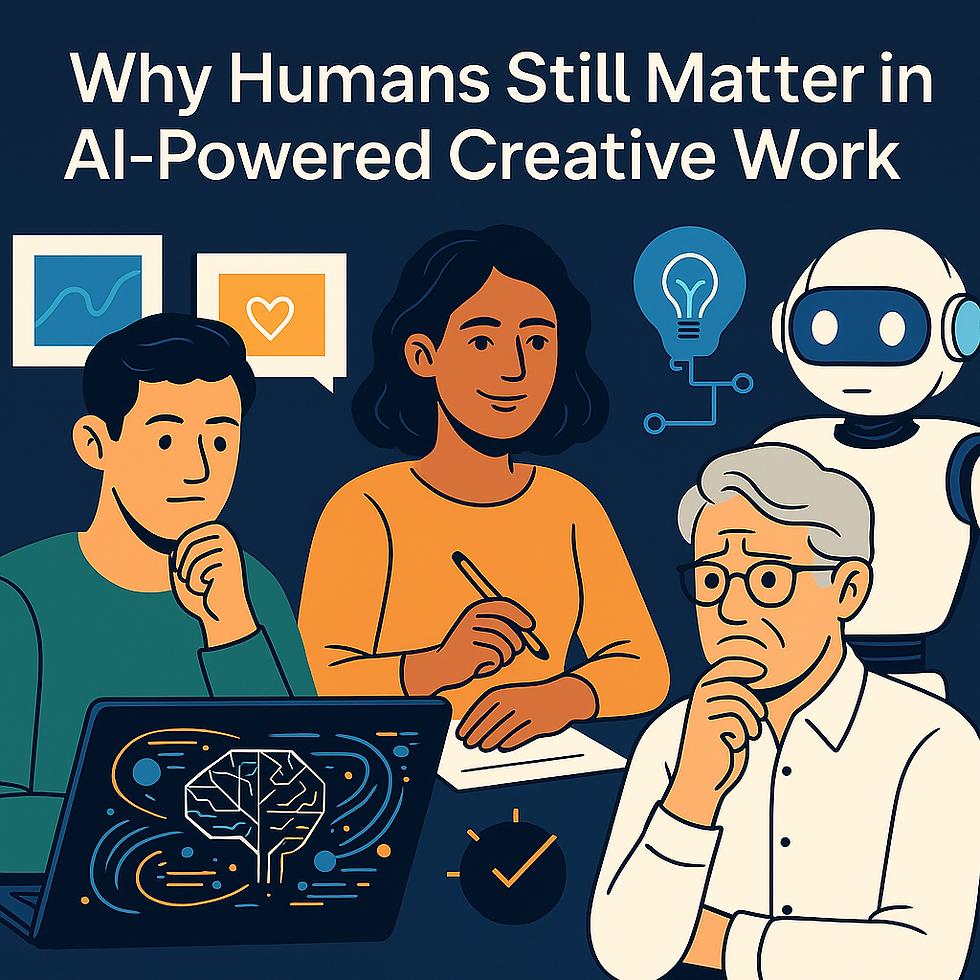Advanced Social Listening: Harnessing Data Visualization and AI for Superior Insights
- pragyasax
- Dec 4, 2024
- 3 min read

Social listening is an indispensable strategy for businesses, researchers, and organizations seeking to stay ahead of trends, crises, and audience needs. Central to this evolution are two high-impact techniques: data visualization for patterns and AI-powered analysis. These tools don’t just track conversations—they transform raw data into actionable insights, empowering users to respond faster and more effectively than ever before.
The Shift from Reactive to Proactive Social Listening
Traditional social listening involves tracking keywords, hashtags, and sentiment. While useful, this approach is limited in its ability to process vast datasets or reveal complex patterns hidden in the noise of online discourse. In today’s environment, where narratives shift rapidly, reactive analysis is no longer sufficient. Instead, organizations must adopt tools that not only analyze data in real-time but also uncover insights that inform proactive decision-making.
1. Data Visualization for Patterns: Seeing the Story in the Data
The Power of Visualization
Social media generates vast amounts of data—mentions, shares, comments, hashtags, and more. Without proper tools, this data is overwhelming and often underutilized. Data visualization transforms this chaos into clarity by presenting key metrics and patterns in a way that’s intuitive and actionable.
Technical Advantages
Trend Identification: Visualization tools such as heatmaps, time-series graphs, and network diagrams highlight shifts in conversation volume or sentiment over time.
Geospatial Insights: Mapping tools pinpoint where conversations are happening, allowing organizations to localize campaigns or address region-specific concerns.
Custom Dashboards: Tailored dashboards aggregate data from multiple sources, enabling users to monitor metrics most relevant to their goals.
Use Cases
Real-Time Crisis Management: A brand detects a spike in negative sentiment tied to a product issue. Visualization tools help identify the source and scale of the problem, enabling swift resolution.
Campaign Optimization: Marketers monitor engagement metrics (e.g., click-through rates or hashtag usage) in real-time, adjusting content strategy to maximize impact.
By simplifying complex data into actionable insights, visualization enables organizations to see what matters, when it matters.
2. AI and Machine Learning: Finding Insights Beyond Human Capacity
Why AI Matters
AI and machine learning have revolutionized social listening by introducing the ability to process vast datasets, detect hidden patterns, and make predictions. Unlike traditional methods, AI doesn’t rely on predefined queries. Instead, it dynamically learns from data, identifying correlations and anomalies that might otherwise go unnoticed.
Key Capabilities
Sentiment Clustering: AI goes beyond basic sentiment analysis to group conversations by nuanced emotional tones, such as optimism, frustration, or sarcasm.
Topic Modeling: Machine learning algorithms cluster conversations into topics, even when they don’t contain pre-defined keywords. This is crucial for identifying emerging trends.
Predictive Analytics: By analyzing historical data, AI can predict audience reactions to campaigns or identify potential crises before they escalate.
Technical Implementation
Natural Language Processing (NLP): NLP algorithms enable AI to interpret context, sentiment, and even idiomatic expressions in multiple languages.
Deep Learning Models: These models identify patterns in unstructured data, such as images or video, expanding social listening beyond text-based insights.
Use Cases
Trend Forecasting: AI-powered tools predict which hashtags, topics, or influencers will dominate future conversations, giving businesses a competitive edge.
Micro-Influencer Identification: By analyzing engagement metrics, AI identifies niche influencers whose audiences align closely with a brand’s target demographic.
Crisis Anticipation: Machine learning algorithms detect anomalies in sentiment or conversation volume, flagging potential issues before they go viral.
AI transforms social listening from a tool for observation into a strategy for anticipation and action.
Why These Tactics Matter Together
The combination of data visualization and AI-powered analysis offers a synergistic approach to social listening. Visualization tools help stakeholders interpret large datasets quickly, while AI uncovers the deeper stories and trends within those datasets. Together, they enable organizations to move from merely tracking conversations to actively shaping them.
Speed and Precision: Visualizations provide immediate clarity, while AI ensures that no detail is overlooked.
Actionable Insights: Visualization highlights patterns; AI explains them.
Scalability: Both techniques handle large-scale data efficiently, making them ideal for global brands or complex research projects.
Transforming Social Listening into a Strategic Asset
Incorporating advanced social listening techniques into your workflow isn’t just about staying relevant—it’s about driving innovation and leading the conversation in your field. Whether you’re monitoring brand perception, predicting campaign performance, or identifying new areas of research, the integration of data visualization and AI-powered analysis ensures that you’re not just reacting to what’s happening—you’re setting the pace.
Investing in these tools means equipping yourself with the ability to:
Anticipate audience needs and behaviors.
Make data-driven decisions with confidence.
Stay agile in an ever-evolving digital landscape.
In a world where information moves fast, the organizations that thrive are the ones that listen smarter. With advanced visualization and AI, social listening becomes not just a practice, but a competitive advantage.



Comments